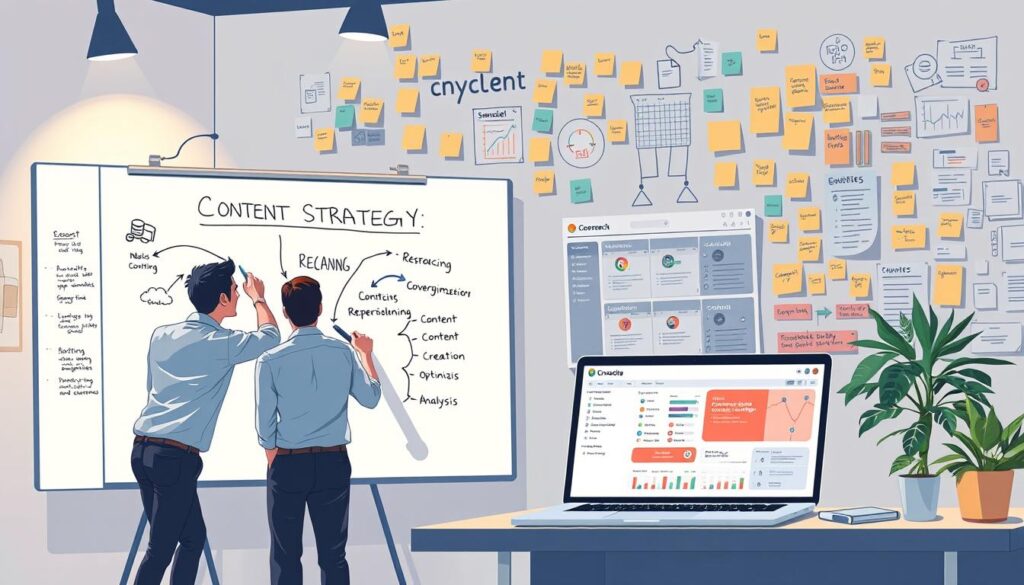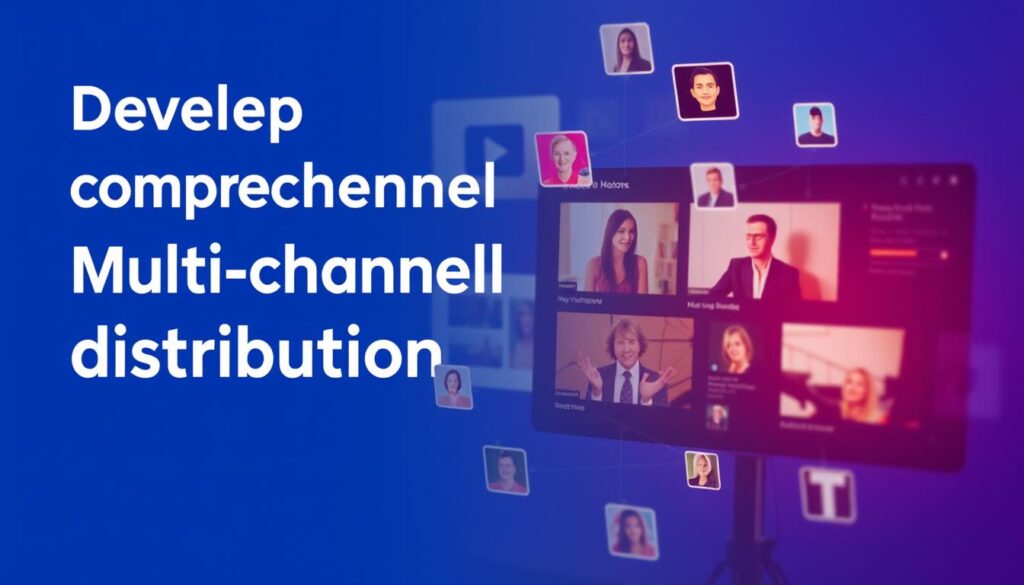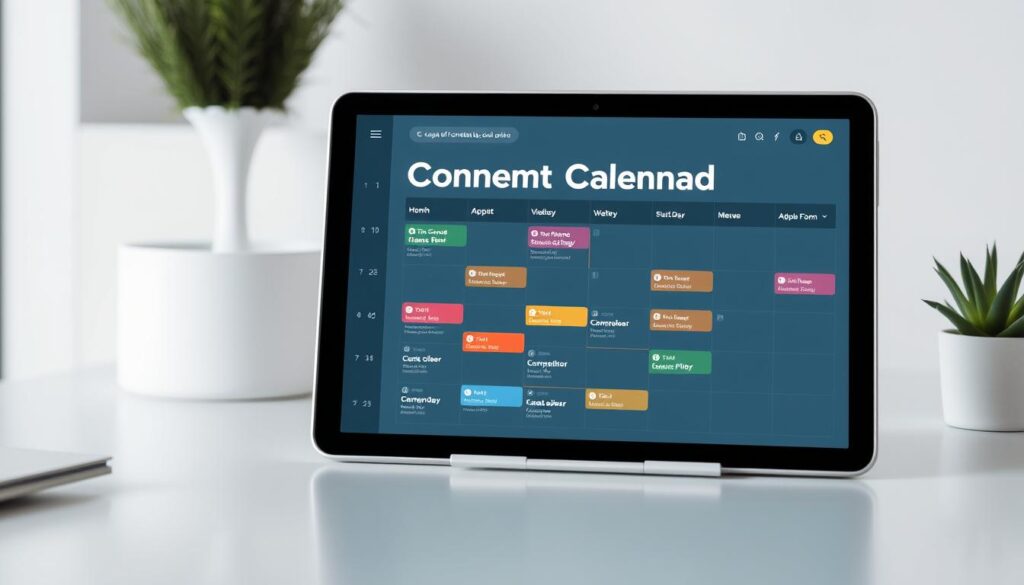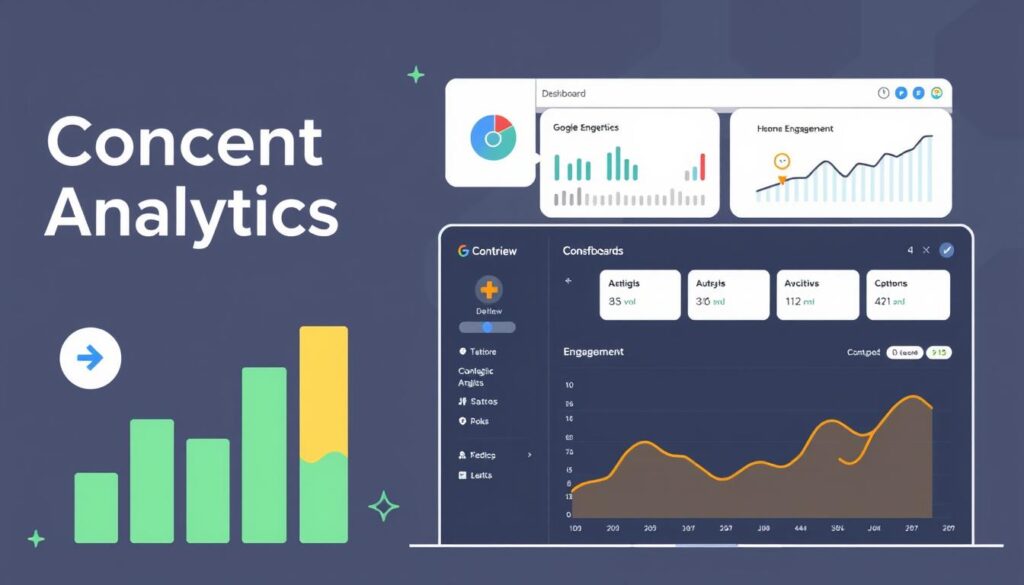In today’s digital landscape, a well-planned content strategy is crucial for businesses to connect with their target audience and drive meaningful results.
A strategy that is aligned with business goals and customer needs can significantly enhance a brand’s visibility and authority in the industry.
By understanding the fundamental components of content creation and governance, businesses can develop a cohesive plan that maximises their marketing impact.
A comprehensive approach to content can help businesses stand out in a competitive digital landscape and ultimately drive conversions and growth.
Key Takeaways
- Understand the importance of a well-planned content strategy in driving business results.
- Learn how to align your content with business goals and customer needs.
- Discover the fundamental components of content creation and governance.
- Gain insights into how a comprehensive content strategy can enhance brand visibility and authority.
- Maximise your marketing impact with a cohesive plan.
Understanding Content Strategy: The Foundation of Digital Success
Understanding content strategy is essential for businesses aiming to maximise their online presence and engage their target audience effectively. In the digital age, content is a critical component of any marketing effort, and a well-planned strategy ensures that content is created and distributed efficiently to achieve specific business goals.
A content strategy is a comprehensive plan that guides all content marketing efforts, from the creation of individual pieces of content to the design of content for different stages of the buyer’s journey. It is a roadmap that aligns with the overall business objectives, ensuring that every piece of content serves a purpose and contributes to the company’s success.
What Is Content Strategy?
Content strategy encompasses the planning, creation, publication, management, and governance of content. It is a holistic approach that considers both the needs of the audience and the objectives of the business. A well-defined content strategy provides a framework that guides all content decisions, ensuring that every piece of content has direction and purpose.
The core elements of a content strategy include understanding the target audience, defining content goals, and determining the most effective channels for content distribution. By doing so, businesses can create content that resonates with their audience and drives meaningful engagement.
How Content Strategy Differs from Content Marketing
While content strategy and content marketing are closely related, they serve distinct purposes. Content strategy is the planning and governance phase, where businesses define their content goals, identify their target audience, and determine the types of content to create. Content marketing, on the other hand, is the execution phase, where the planned content is created and distributed to achieve specific marketing objectives.
To illustrate the difference, consider the following table:
| Aspect | Content Strategy | Content Marketing |
|---|---|---|
| Purpose | Planning and governance | Execution and distribution |
| Focus | Defining goals and audience | Creating and publishing content |
| Outcome | A comprehensive content plan | Engagement and conversion |
In conclusion, a well-defined content strategy is crucial for businesses to navigate the complex digital landscape effectively. By understanding the distinction between content strategy and content marketing, businesses can develop a robust content plan that drives engagement and achieves their marketing goals.
Why Content Strategy Development Is Essential for Business Growth
In the realm of digital marketing, a robust content strategy serves as the backbone for successful business growth. By developing a comprehensive content strategy, businesses can align their team goals and objectives, ensuring everyone works towards a common purpose.
Aligning Team Goals and Objectives
A well-defined content strategy unifies the team by providing a clear direction and objectives. This alignment is crucial for maximizing the impact of content marketing efforts. By understanding the overall business goals, content creators can produce material that supports these objectives, driving the business forward.
Guiding Content Creation and Distribution
A content strategy acts as a roadmap for content creation and distribution, ensuring that every piece of content serves a specific purpose. This strategic approach helps businesses to optimise their content for various channels, such as social media platforms, email marketing, and company websites, thereby reaching their target audience more effectively.
Optimising Resources and ROI
By planning and allocating resources effectively, businesses can maximise their marketing budget and achieve a greater return on investment (ROI). A content strategy enables companies to measure the impact of their content marketing efforts, making it easier to demonstrate the value of their initiatives and secure continued investment.

| Benefits of Content Strategy | Description | Impact on Business |
|---|---|---|
| Aligns Team Goals | Unifies the team towards common objectives | Increased collaboration and productivity |
| Guides Content Creation | Ensures content serves a specific purpose | Improved content relevance and effectiveness |
| Optimises Resources | Maximises marketing budget and ROI | Enhanced business growth and profitability |
By adopting a strategic approach to content development, businesses can drive organic traffic, build brand authority, and foster lasting customer relationships. This, in turn, contributes to sustained business growth and a stronger online presence.
Key Elements of an Effective Content Strategy Plan
The backbone of any successful content strategy includes several critical elements that must be carefully planned. An effective content strategy plan is essential for businesses aiming to leverage content marketing for growth.
Clear Goals and Objectives
Clear goals and objectives are the foundation upon which a content strategy is built. Businesses must define what they aim to achieve through their content, whether it’s increasing brand awareness, generating leads, or enhancing customer engagement. Setting specific, measurable goals allows for a focused content creation process.
Audience Personas and Research
Understanding the target audience is crucial. Developing detailed audience personas through rigorous research enables businesses to create content that resonates with their customers’ needs and aspirations. This involves gathering data on demographics, preferences, and behaviors to craft a semi-fictional representation of the ideal customer.
Content Types and Channels
The next step involves deciding on the types of content to be created and the channels through which they will be distributed. This could include blog posts, videos, social media content, or email newsletters, among others. The key is to select formats and channels that align with the audience’s preferences and behaviors.
Content Governance and Standards
Establishing robust content governance and standards is vital for maintaining quality, consistency, and brand voice across all content assets. This includes setting policies for content creation, publication, and maintenance, ensuring that all content adheres to the brand’s overall strategy and messaging.
| Element | Description |
|---|---|
| Goals and Objectives | Define what you want to achieve with your content. |
| Audience Persona | A semi-fictional representation of your ideal customer based on data and research. |
| Content Types and Channels | Decide on the types of content and the marketing channels for distribution. |
| Content Governance | Set standards and policies for content creation, publication, and maintenance. |
The Content Strategy Development Process: Step-by-Step Guide
To maximise the impact of your content, a structured development process is essential. This involves several key steps that help you create a comprehensive content strategy aligned with your business objectives.
Defining Your Content Goals
The first step in developing a content strategy is to define clear, measurable goals. This involves understanding what you aim to achieve through your content marketing efforts. Are you looking to increase brand awareness, generate leads, or drive sales? Establishing specific goals helps guide your content creation and distribution efforts.

Conducting Persona Research
Conducting persona research is crucial to understanding your target audience. This involves gathering data about your ideal customers, including their needs, challenges, and preferences. By creating detailed buyer personas, you can tailor your content to resonate with your customer base, increasing its effectiveness.
Running a Content Audit
A thorough content audit is necessary to assess the performance of your existing content. This process involves evaluating your top-performing and underperforming content, identifying gaps in your content ecosystem, and determining areas for improvement. A content audit helps you understand what works and what doesn’t, informing your future content strategy.
Creating a Content Workflow
Establishing an efficient content workflow is vital to streamlining your content creation, review, approval, and publication processes. This involves defining roles and responsibilities within your team, setting clear guidelines, and implementing a system for managing content across different channels. A well-organized workflow ensures consistency and quality in your content.
By following these steps, you can develop a robust content strategy that drives results and supports your overall marketing objectives.
Developing Your Content Marketing Funnel
To maximise the impact of your content strategy, it’s vital to develop a comprehensive content marketing funnel. This structured approach guides your audience seamlessly from the initial awareness stage through to conversion and beyond, creating a journey that feels natural and valuable at every stage.
Discovery and Awareness Stage Content
The discovery and awareness stage is crucial for attracting organic or paid website traffic. Your primary focus should be on creating content that addresses the needs and issues of your potential customers, thereby establishing your brand as a trusted resource. This can be achieved through informative blog posts, engaging social media content, and strategic use of keywords to enhance visibility.
Consideration Stage Content
At the consideration stage, your audience is evaluating whether your product or service is right for them. Here, you should provide detailed content that addresses specific pain points and questions, such as in-depth guides, comparison charts, and customer testimonials. This stage is critical for building trust and nudging potential customers closer to a decision.
Purchase and Conversion Stage Content
The purchase and conversion stage is where prospects decide to take action. To facilitate this, you can offer trials, demos, e-books, or other valuable resources that highlight the benefits of your offerings. Effective content at this stage provides the final push needed to convert interested prospects into paying customers, without resorting to aggressive sales tactics.
Content Types and Formats for Maximum Engagement
To maximise engagement, it’s crucial to diversify your content types and formats. A well-roundedcontent strategyincorporates various formats to cater to different audience preferences, enhancing overallengagement.
Blog Posts and Articles
Blog posts and articles remain a cornerstone of effective content marketing, offering a platform to establish thought leadership and drive organic traffic. By crafting informative and engaging written content, businesses can attract and retain a clearly defined audience.
Videos and Podcasts
The rise of video content has transformed digital engagement, with formats ranging from short-form social clips to in-depth tutorials and webinars. Similarly, podcasts offer a unique opportunity to build intimate connections with the audience through audio storytelling, perfect for busy professionals consuming content on-the-go.
Infographics and Visual Content
Infographics and visual content simplify complex information, making it instantly digestible and highly shareable across platforms. By leveraging visual elements, businesses can significantly enhance the appeal of their content.
Social Media Content
Crafting social media content that’s platform-specific is crucial, leveraging the unique features and audience expectations of each channel to maximise engagement and reach. Understanding the nuances of each platform helps in tailoring content that resonates with the target audience.
Email Newsletters and Campaigns
Email newsletters and campaigns remain effective direct communication channels that nurture leads, drive conversions, and build lasting relationships with the audience. By personalising email content, businesses can significantly improve engagement metrics.
By incorporating these diverse content types and formats into a comprehensive content strategy, businesses can dramatically elevate their engagement metrics and achieve their marketing objectives.
Content Distribution Strategies That Drive Results
A well-planned content distribution strategy is the key to unlocking your content’s full potential. By leveraging multiple channels, you can ensure that your valuable content reaches your target audience wherever they spend their time online.

Owned Media Channels
Owned media channels provide the foundation of your distribution strategy, giving you complete control over your message and audience relationship. Your website, blog, email list, and social media profiles are essential channels for distributing your content and engaging with your audience.
Earned Media Opportunities
Earned media opportunities can exponentially expand your reach through third-party endorsement. Consider guest posting, journalist outreach, and community engagement to increase your content’s visibility and credibility.
Paid Media Tactics
Paid media tactics can amplify your best-performing content, reaching new audiences with laser-targeted precision. Utilise platforms like Google Ads, social media advertising, and content discovery networks to maximise your content’s impact.
By creating a balanced distribution mix across owned, earned, and paid channels, you can optimise your marketing budget and ensure that the right content reaches the right people at the right time.
Content Clusters and SEO: Maximising Organic Traffic

Content clusters are revolutionising the way businesses approach SEO, enabling them to maximise their online presence and drive organic traffic. By creating a series of interconnected posts that target all aspects of a particular topic in detail, businesses can establish their brand authority and target consumers across multiple stages of their marketing funnel.
Understanding Content Clusters
Content clusters are a strategic approach to content organisation that improves search visibility while establishing a brand as an authority in its field. For instance, if the main topic is SEO, a central post can offer a general overview of the subject, while separate pieces can target sub-topics like on-page, off-page, and technical SEO. To learn more about content clusters, visit Backlinko’s guide on topic clusters.
Keyword Research and Implementation
Effective keyword research is crucial for identifying high-value search terms that the target audience is actively using. This involves uncovering long-tail opportunities that competitors may have overlooked. By naturally integrating target terms into the content, businesses can improve their search engine rankings without sacrificing readability or user experience.
Optimising Content for Search Engines
Optimising content for search engines involves several technical aspects, including metadata, schema markup, and internal linking structures. These elements help search crawlers understand the content’s relevance and relationships, ultimately improving its visibility in search engine result pages (SERPs).
Content Calendars and Editorial Planning

Content calendars and editorial planning are crucial elements in a successful content strategy, enabling businesses to stay organised and focused. By implementing a robust content calendar, teams can streamline their content creation process, ensuring that all content is aligned with business objectives and audience interests.
Creating an Effective Editorial Calendar
An editorial calendar provides a broad overview of the themes that your content should cover within a specific time period. To create an effective editorial calendar, start by aligning your content themes with business objectives, seasonal opportunities, and audience interests. This ensures that your content always serves a clear purpose and resonates with your target audience.
Content Planning Best Practices
Effective content planning involves several best practices that enable your team to work more efficiently. First, maintain a consistent quality across all content assets by establishing clear guidelines and standards. Second, build flexibility into your content planning to accommodate trending topics, breaking news, and unexpected opportunities. Finally, use your content calendar as a collaboration tool to improve communication between team members and align everyone around shared goals.
By mastering content planning best practices and leveraging both editorial and content calendars, businesses can transform their content operation from reactive and chaotic to strategic and purposeful. This not only enhances the effectiveness of their content marketing efforts but also improves overall marketing performance.
Measuring Content Strategy Success: Metrics and KPIs
To gauge the effectiveness of a content strategy, it’s crucial to establish a robust measurement framework. This involves selecting the right metrics and KPIs that align with the content strategy’s goals.

Engagement Metrics
Engagement metrics provide insights into how the audience interacts with the content. Key engagement metrics include time on page, scroll depth, social shares, and comment activity. These metrics help understand how deeply the audience is connecting with the content.
Conversion Metrics
Conversion metrics track the actions taken by the audience after consuming the content. This includes newsletter sign-ups, product purchases, or consultation requests. By monitoring conversion metrics, businesses can assess the effectiveness of their content in driving valuable business actions.
ROI Measurement
Measuring the return on investment (ROI) of content is crucial for understanding its financial impact. Advanced ROI measurement approaches consider not just cost-per-lead calculations but also the full business value of the content, including brand building and customer retention benefits.
By regularly monitoring these metrics and adjusting the content strategy accordingly, businesses can optimise their content’s performance and achieve their marketing goals.
Content Strategy Tools and Resources

To maximise the impact of your content strategy, leveraging the appropriate tools is crucial. The right content strategy tools and resources can dramatically enhance your team’s productivity, content quality, and measurement capabilities.
Content Management Systems
Effective content management is the foundation of any successful content strategy. Leading content management systems (CMS) like Adobe Experience Manager, WordPress, and HubSpot provide robust platforms for creating, managing, and optimising your content. For instance, a platform like Content Hub helps maintain brand consistency with its AI-powered writing assistant.
SEO and Keyword Research Tools
SEO and keyword research are critical components of a content strategy. Tools like SEMrush, Ahrefs, and Moz uncover valuable insights about search trends, competitor strategies, and content opportunities, enabling you to refine your content strategy.
Content Creation and Design Tools
Innovative content creation and design tools empower your team to produce professional-quality assets across various formats. From AI writing assistants to graphic design platforms like Canva, these tools enhance the quality and diversity of your content.
Analytics and Reporting Platforms
Robust analytics and reporting platforms provide a unified view of your content performance across channels. Tools like Google Analytics and HubSpot’s analytics platform help you identify patterns and opportunities for optimisation, ensuring your content strategy is data-driven.
By integrating these tools into your content strategy, you can create efficient workflows from content planning and creation through to distribution and measurement, ultimately maximising your content’s impact.
Conclusion: Building a Sustainable Content Strategy for Long-Term Success
In today’s digital landscape, a content strategy that aligns with business goals is indispensable. A well-developed content strategy transforms your organisation by aligning it around clear goals and a shared vision for how content drives business success.
To build a sustainable content strategy, it’s essential to balance strategic consistency with tactical flexibility, fostering a culture of content excellence within your organisation. Regularly reassess and refine your content marketing approach using data and insights to drive long-term success.






